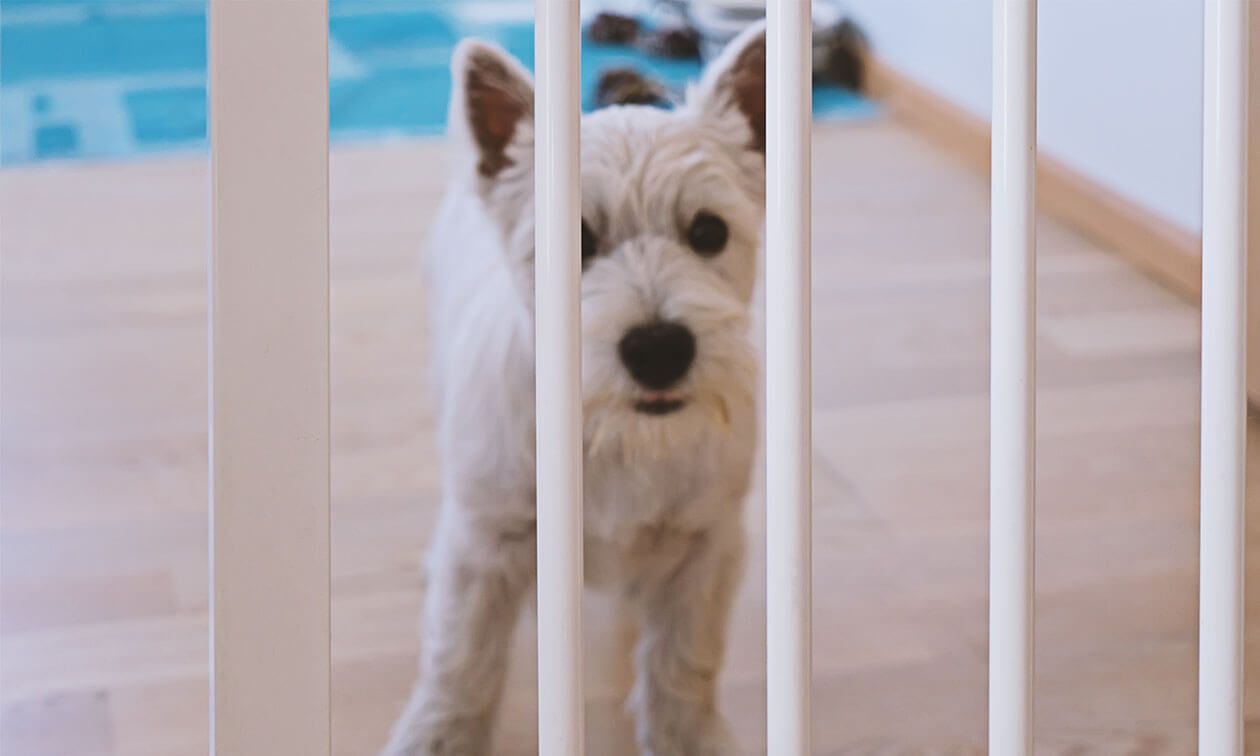If you've noticed that your dog is constantly lifting their leg around your house, they're likely urine marking. Marking is different from simply emptying the bladder, as it tends to be small amounts of urine rather than a complete emptying out of the bladder. While marking is a normal dog behavior, it can be quite frustrating if your dog decides they need to mark inside, on furniture, walls, and in some cases, even people.
There are many reasons your dog could be urine marking. It's not always just about claiming territory. Once you've identified the cause for their excessive marking, it's easier to address and hopefully stop it altogether.
Why Do Dogs Mark?
- Communication with other dogs. Think of urine marking as leaving a note for someone. Dogs often mark their territory or walking route because that urine carries a lot of information. The urine scent provides details like sex, reproductive status, age, health, and more.
- Marking territory. For some dogs, it really is about drawing a "border" around the area they consider their territory. Their scent tells other dogs that another dog lives there or has claimed that space. This may happen if you have other dogs frequently pass close by or visit your home or if the previous tenant or owner of your home had pets and their scent is still detectable to your dog. A dog may also mark new or novel things in the home, such as a new couch, to impart a sense of familiarity with the new item.
- Tension with other dogs in the home. When there is a conflict between two household dogs, a subtle aspect of aggression is marking over another dog's urine spot. This can create a cycle of constantly seeking out and marking over the other dog's scent.
- Stress or anxiety. Some dogs mark because they perceive a threat, which can increase stress and anxiety. This may be due to guests visiting your home, a new baby, or a reaction to loud, continuous noise nearby. Marking may be a self-soothing response for these dogs or simply a way to cope with their internal conflict. The size and location distinguish it from house soiling (which can also be brought on by stress). Peeing is usually larger urine spots or accidents near exit points, whereas marking is often small "piddles" on walls or furniture.
- Underlying health issues. Changes in urination, including marking or what may look like marking due to the location and small amount, are often a sign of a medical issue, such as a urinary tract infection (UTI), urinary incontinence, bladder stones, cancer, kidney issues.
How To Stop Your Dog From Marking Inside
- Rule out medical causes. If your dog has suddenly started marking or has increased marking frequency, speak with your veterinarian to ensure it's not a medical issue. They can also help you navigate through behavioral issues.
- Thoroughly clean urine spots. Make sure to thoroughly clean any previous marking locations to remove the smell and decrease the draw to mark that spot again. Use an enzymatic cleaner made specifically for pet accidents. You may need to use a blacklight to search your home for urine stains that aren't visible to the naked eye. This technique is also helpful to see if there are any stains from previous pets in the home that weren't thoroughly cleaned.
- Block access to areas your dog frequently marks. If your dog prefers to mark a specific piece of furniture or wall, use gates or closed doors to prevent your dog from accessing these places while you revisit potty training with your dog.
- Revisit housetraining. You may need to go "back to the basics" of house training with dogs who mark in the home. Reducing their freedom to roam unsupervised is the first step. Consider crate training them too. Take them out frequently and reward them for going potty in the appropriate places. Watch to make sure they have ample time to "empty " before allowing them back inside.
If you notice your dog about to lift their leg or mark an area, calmly and immediately interrupt, and take them outside to go to the bathroom. Be sure to positively reinforce when they do go potty outside. - Address any conflicts between household dogs. If your dog is struggling with another pet, it's imperative to work with a professional canine behavior consultant to decrease tension. This may include changes in management and beginning a behavior modification plan to reduce aggression or competition over resources in the home.
- Treat anxiety and stress. If your dog is suffering from anxiety or stress, work with your veterinarian and a certified professional dog trainer to treat the underlying cause. This may include helping your dog feel better about visitors, coping with a routine change, treating noise anxiety, or other underlying issues. By getting to the root of the issue, you'll see a decrease in marking behavior.
- Consider spaying or neutering your dog. Dogs who are still intact are more likely to urine-mark because of instinctual hormonal urges. In many cases, spaying or neutering a dog will greatly decrease their urine-marking behavior. However, this isn't a guarantee, especially if marking has become a learned habit, so practicing the other recommendations above is important.
Consider belly bands. Belly bands are a diaper for male dogs that they can wear to protect your home furnishings from urine marking. Be aware, though, that these are meant as a short-term solution or protective measure while working on your dog's underlying cause of urine marking. You will need to frequently change and wash the belly band (usually daily in hypoallergenic laundry detergent). Be sure to gently clean your dog's underside, where the belly band lays, with hypoallergenic pet wipes. This regular cleaning of the bands and your dog will help prevent odor buildup and skin infections.
ZPC-02529





